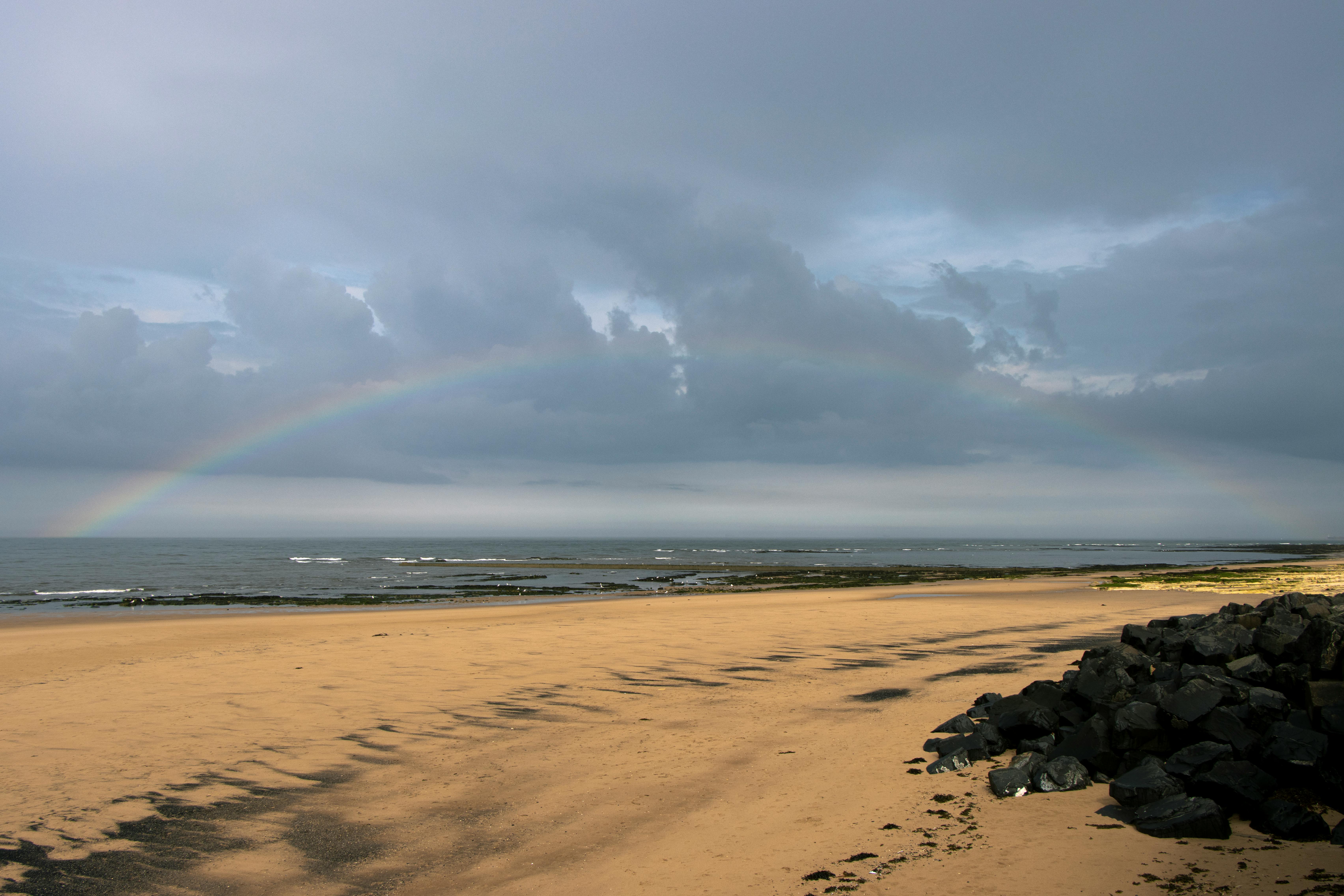The Top 10 Scenic Walks In Durham
County Durham is a vast territory intermingling history, heritage and varied landscapes that present something different for every day of a break here. From the wilderness of the North Pennines, through isolated settlements in pretty valleys, to the pomp of the Prince Bishops who once lived at Durham Cathedral, the county remains a little unknown as a destination – which only adds to its appeal. Better still, it’s crossed with a network of spectacular walking routes to suit all levels of fitness.
From the heritage coast in the east to the dales in the west, walks in County Durham pass through a rich landscape of rural villages, windswept moorland and river valleys that run to the sea. Whether it’s a hike over rugged peaks, a stroll in the Durham Dales or a walk taking in some of the area’s unique history, County Durham has some of the finest walking routes in the north to choose from.
If you’re a keen walker, no doubt you enjoy spending time outside. You can maximise that time by booking outdoor accommodation – and there’s no doubt that Pitchup has the best selection of campsites in the Durham area.
Durham Riverside Walk
The city of Durham is a magnificent place to visit with cobbled streets winding their way up to the UNESCO-listed cathedral – one of the finest examples of Norman architecture in Europe, occupying a rocky promontory high above a bend in the River Wear along with the adjacent 1,000-year-old castle, now part of prestigious Durham University.
The best place to see this most celebrated and photographed sight is from the riverbanks that meander along a shady tree-lined path below the cathedral. You can make it a circular walk around Durham by crossing the Wear at any of the three mediaeval arched bridges or one of the more modern structures traversing the river. A visit to the cathedral features on our rundown of the seven top things to do in Durham, so check that out when you plan your day.
Derwent Waterside Park
High up in the hills above the town of Consett is Derwent Waterside Park, surrounded by a freely accessed park with a multiuser lakeside path looping around the reservoir’s seven-mile shoreline. Occasionally climbing gently into the surrounding woodland and with several places to stop off for a picnic, the route offers stunning vantage points looking out across the watery expanse. If you’re not a walker, you can try dinghy sailing, angling and organised open-water swimming sessions (otherwise, please keep out of the water for safety reasons), while the kids can run around on swings and rope courses in the playpark. Dogs must be kept on leads, except in the designated 12-acre field where they too get to run free.
Beamish Woods Circular Walk
Fantastic Beamish – The Living Museum of the North is surrounded by acres of mature deciduous woodland. Paths and tracks snake through the area, revealing hints of its once-thriving agricultural and industrial past. Starting from the Eden Place Picnic Area, the three-mile Beamish Woods Circular Walk leads you onto an old railway line that once carried coal to the coast, and to the remains of a paper mill, a drift mine and a sculpture of a mill wheel made from old railway sleepers. The track also wends past tumbledown cottages that once housed forge workers and the remains of a flint mill dating right back to the 12th century. The Shepherd & Shepherdess Inn nearby is a local landmark with tempting locally sourced fare for when you’ve walked up an appetite.
Low and High Force
The jaw-dropping five-mile High Force circular walk is in Upper Teesdale within the North Pennines National Landscape. The route takes in High Force (at 70 feet this is England’s biggest waterfall) and its no-less-impressive smaller sibling. The walk leads along the banks of the River Tees, crosses the old lead miners’ Wynch Bridge, and passes through pretty woodland trails, picking up part of the Pennine Way.
To make it a triple-waterfall delight, nearby Summerhill Force is equally worth a visit. Less well known (and quieter for it…), this is a delightful spot with water cascading into a pool in which kids and dogs can splash. In a recess behind the falls is Gibson’s Cave – local legend tells the tale of an outlaw who hid here from constables hunting him in the 16th century.
Good to know: if you have time constraints, you can cheat and see High Force a couple of minutes’ walk from the car park at the High Force Hotel in Forest-in-Teesdale.
Killhope Woodland Walks
Killhope Lead Mining Museum (closed for repair in late 2024) is the most complete lead mining site in Britain. The giant wheel of the former mine looms into view as you climb the main road from St John’s Chapel through Cowshill to the remote spot. It’s hard to imagine nowadays that this place was once a hive of activity; today the surrounding Killhope Woodland has several accessible trails running through it and you can sometimes see the colony of local red squirrels from one of the hides.
Barnard Castle to Egglestone Abbey
Deep within the Tees Valley is the charming town of Barnard Castle. Set in a dip in the moors where the river has carved out an undulating gorge, ‘Barney’ (as it’s affectionately known) is dominated by the ruined towers of the fortress from which it takes its name.
The short, two-mile section of River Tees from Barnard Castle to Egglestone passes by the remnants of ancient mills and a marble quarry with views of the spectacular Bowes Museum, housed in an elegant French-style chateau. The route reaches Egglestone Abbey as the Tees burbles along between limestone bluffs and clefts (that’s cliffs and crevices for those who’ve forgotten their school geography lessons).
Auckland Way Railway Path
This is a multiuse trail of just over four miles that begins in the grounds of Auckland Palace, which was the official residence of the Bishops of Durham until it passed to a trust to manage as a tourist attraction in recent years. The surrounding parkland was used by the bishops for hunting, and on this walk there are good views of the park and impressive deer house (a vast shelter built in the 1760s) from the terraced castle gardens.
Walk through the park and pick up the Auckland Way Railway Path near the River Gaunless; this leads along a flat route to Spennymoor, a former mining town with several good art galleries. Remnants of railway history can be seen all along the route, including what may be the country’s only double bridge – built at this width and tree-lined because Bishop Lightfoot (1828-1889) reputedly hated the railway traversing his domain and wanted to see no sign of it.
Good to know: Auckland Palace is just over the River Wear from the site of Kynren, the epic historical show performed outdoors on summer weekends.

Durham Heritage Coast Walk
Not so long ago, the County Durham coast was one big industrial landscape. For more than a century, massive pit shafts dominated the skyline along with beaches turned black under a layer of colliery spoil. In recent decades, the shoreline has been transformed. Nature has reclaimed the area and what was once its rarest species – tourists – have returned.
The Durham Heritage Coast Walk is now one of the finest and richest sections of the England Coast Path (it’s definitely the best signposted too). Stretching for 11 miles from the harbour town of Seaham to the cliffs at Crimdon, it makes for a scenic and easy seaside walk with much of the way flat apart from the odd drop into dunes and wooded coastal denes. To discover what you can see along the way, check out the five must-visit beaches near Durham.
Hamsterley Forest
Hamsterley Forest is the largest woodland tract in County Durham and occupies two sides of a sheltered valley in Weardale. There are waymarked routes throughout the broadleaved and coniferous forest suitable for walkers, cyclists and strollers of all abilities and hiking ambitions.
Hamsterley Forest is a great place for families. There are adventure playgrounds, bike hire and themed trails including a Gruffalo discovery route (with wooden sculptures of the characters from the book), and a Wallace & Gromit-themed route with a treasure hunt and interactive quizzes for kids. For those looking for a peaceful ramble, it doesn’t take long to escape the crowds and get lost (almost) among the towering trees and moorland.
Weardale Way and Teesdale Way
The Durham Dales are two long green valleys formed by the two great rivers of the county, which begin up in the North Pennines National Landscape before eventually finding their way to the North Sea. There are two long-distance walks that follow these rivers: the Weardale Way and the Teesdale Way offer different perspectives on County Durham but both pass through lush valleys overlooked by dales, fells, moorland and commons.
The Weardale Way is 73 miles long, and the lengthier Teesdale Way is 92 miles. Both eventually leave the boundaries of County Durham – the former as the Wear makes its way to the North Sea at Sunderland, and the latter through the Tees Valley counties to the coast at Redcar.
Durham and its verdant countryside is a simply stunning region of the north east; read more in Pitchup’s comprehensive guides to North East England. If you’re considering spending time in the area, Pitchup offers budget-friendly camping options that give you the freedom to spend time in nature, whether you’re after a family-friendly caravan park with lots of amenities, a luxurious adults-only retreat or a back-to-basics farm campsite that welcomes dogs.

